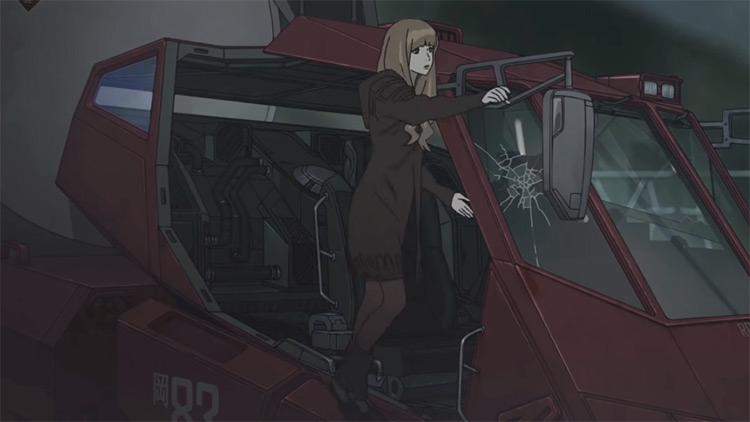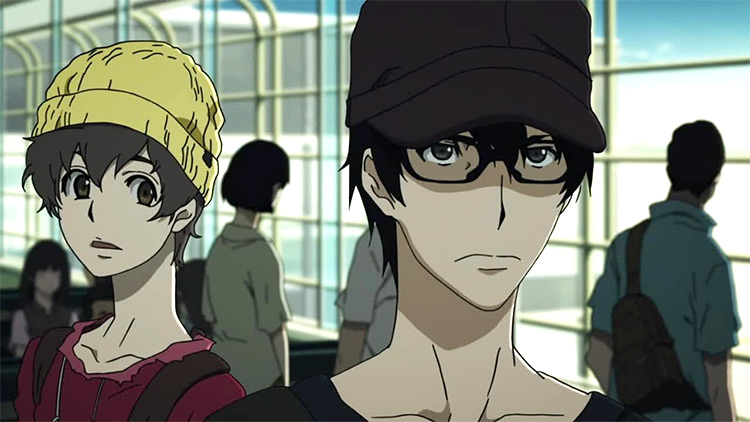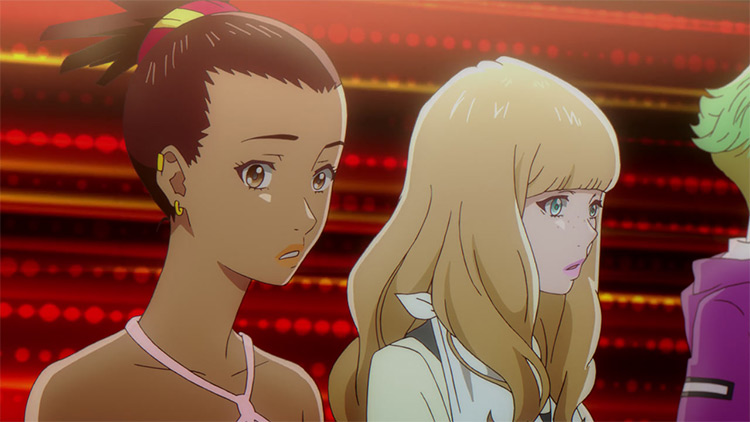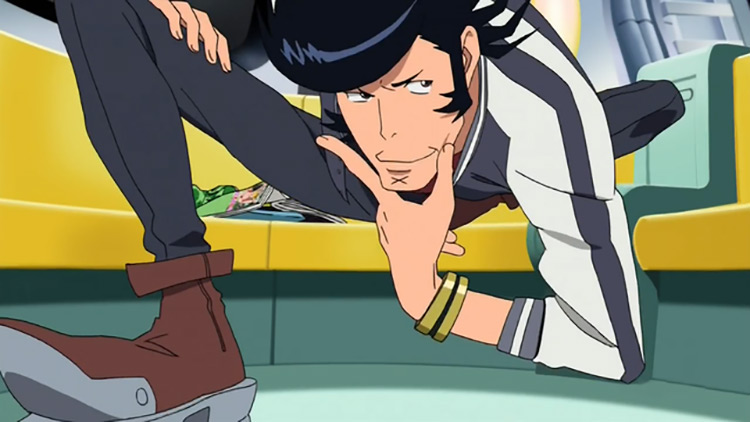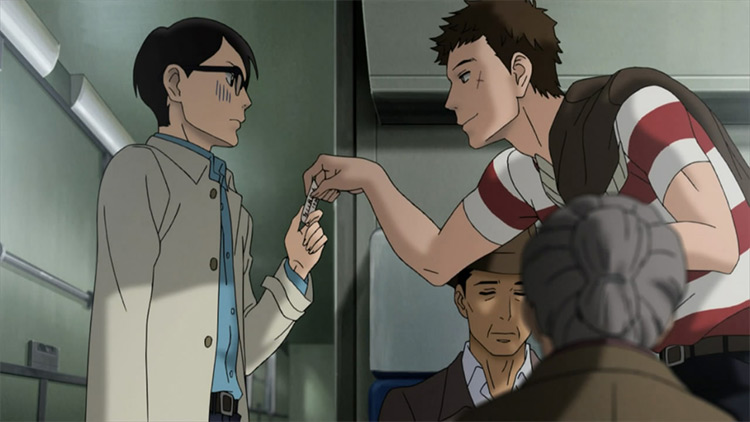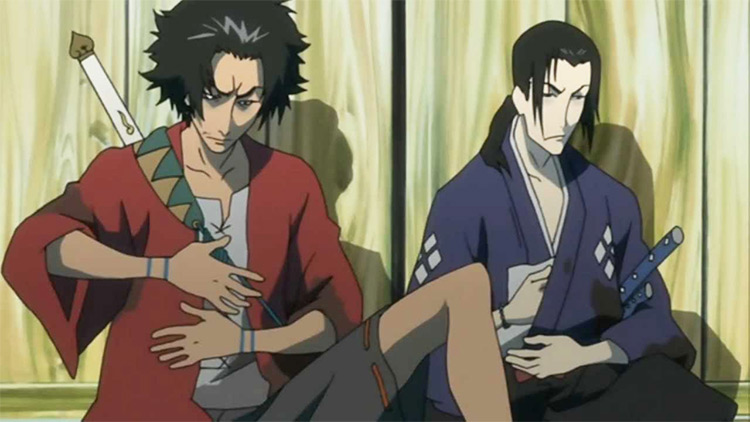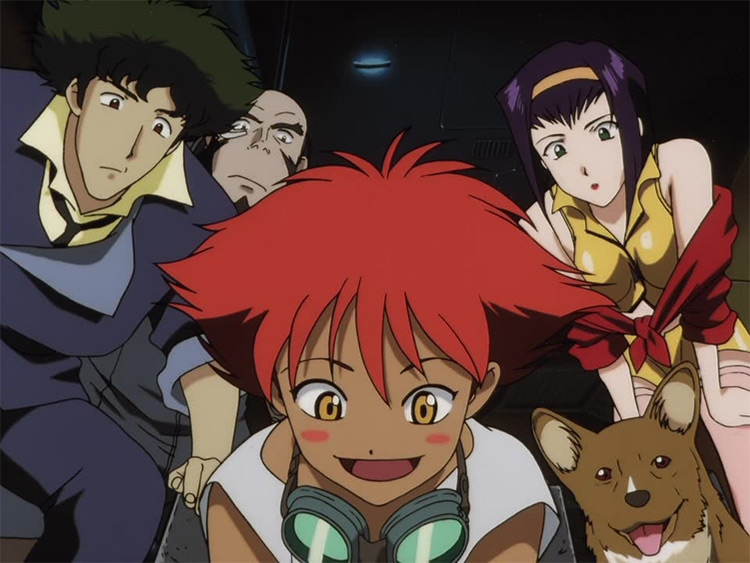His style extends past the medium into the minds and hearts of Kubrick fans and cartoon fanatics alike. The way he fuses narrative setting with musical genre is masterful, giving each of his productions the atmosphere and approach of a music album, as opposed to a TV show. Fancy some wacky action jazz? Look no further than Bebop. In the mood for post rock, something empty and sad that tells a story through strings and horns? Then Terror in Resonance is for you. Or if you’re indecisive, check out Carole and Tuesday covering everything from classic rock to dubstep. With Watanabe, variety is the key: though you can always be guaranteed AAA direction.
7. Blade Runner: Black Out 2020
This is a fifteen minute prologue to the movie of 2017, directed by none other than Watanabe himself. While it doesn’t say much with narrative, and can be quite confusing and boring for a feature of this length, this is worth a watch. At least for the direction, soundtrack, and atmosphere. Definitely only watch this if you intend to watch more Blade Runner movies, though. As otherwise in a vacuum, Black Out 2020 probably won’t hold much significance to you.
6. Terror in Resonance
Explosions, emotions, and tragedy – a somber palette of greys and blues. Terror in Resonance is flawed, primarily in its storytelling, but is an exceptional portfolio of animation and sound. Every episode is astoundingly well directed, setting a somber yet hopeful mood perfectly befitting the protagonists. There aren’t many stories that discuss terrorism. So I wouldn’t have minded more breadth as opposed to depth. However, the twists and turns and lovable characters will be more than enough to contain your attention. It’s an astonishing production that invoked a very specific sensation within me. A longing emptiness felt also by the protagonists here. Definitely check this one out, as it’s short enough to form your own opinion quickly (just 11 episodes) and could just be your favorite.
5. Carole and Tuesday
We’re set in the same distant future as Cowboy Bebop, where interspatial travel is commonplace. We follow two girls – Carole and Tuesday – living in the thriving metropolis of Mars. They immediately connect through a busking session on the streets, and we follow their rise from nobodies to somebodies in the music industry. I love the first half of this show in particular, that chronicles a singing competition the likes of X-Factor or Pop Idol, featuring dozens of wholly original songs in totally different genres. The animation is exceptionally good. And while the plot can sometimes be let down by the lofty ambitions of the production values, it never dips below a certain standard of quality. Just we expect from Watanabe. This is his swan song. A love letter to music, not just through subtext and mood, but through the narrative as well.
4. Space Dandy
Space Dandy is a dandy guy – in space! Season one is a fairly average sci-fi romp punctuated with a zany style and absurd episodic storylines. Innovative and incredible colorful. However, season two is where Space Dandy really becomes something else. Every episode is animated and directed by a renowned guest director, each bringing their own vibe and ideas to the project to flesh out the world and characters further. It draws from hundreds of Western influences ranging across pop culture and genre, and the soundtrack is an electronic rollercoaster occasionally spiced by emotional acoustics. Plus this also got a surprisingly effective finale, making the entire adventure even more soul-felt and mind-bending than one might assume.
3. Kids on the Slope
Nishimi is an introverted pianist, stoically playing the piece to beautiful precision. This gets the praise out of nearly any professional lucky enough to hear him. However, it doesn’t impress the energetic delinquent drummer Kawabuchi, who believes Nishimi should flow with the music more and accept a freeform approach to his playing. He initially resists, but begins to climb out of his shell upon watching Kawabuchi perform jazz to the beat of his own drum. Here Watanabe fuses jazz and emotion perfectly, using gorgeous medleys of the familiar (and dissimilar) to tell a gorgeous coming-of-age story. The style, aesthetic, and soundtrack is a master-class attempt at simple music-oriented storytelling in anime. All the characters are realistic too. Flawed and capable of mistakes and conflict. Watch this if you want something short, sweet, and comfortable, with an emotional core.
2. Samurai Champloo
The breakdance-styled samurai Mugen, and the stoic traditional samurai Jin, accidentally destroy the bar they’re drinking in during a fight. They end up in trouble with the law – but more importantly, in trouble with Fuu Kasuni the waitress who is now jobless. She forgives them on one condition: they join her in finding a samurai who smells of sunflowers. They accept reluctantly (wouldn’t we all?) Samurai Champloo is emotional, action-packed, and hilarious. Watching the three unlikely protagonists grow dependent on one another and overcome their own personal hang-ups is satisfying. And the underlying mystery is absolutely intriguing. This features one of my favorite soundtracks in all of Watanabe’s works: peaceful hip-hop blended with traditional Japanese sensibilities.
1. Cowboy Bebop
This is Watanabe’s magnum opus. A glorious mix-up of Western spaghetti flicks, science-fiction adventures, existential ennui, and a touch of bebop jazz. Set in the year 2071, Cowboy Bebop follows a group of bounty hunters. It’s episodic in nature, with an overhanging plot building on the antics of our heroes before the events of the first episode. In this way, Cowboy Bebop begins in-media-res, or rather at the very end of our protagonist’s stories. And the rest of the series is them coming to terms with the past. It’s got some of the best animation and style that Studio Sunrise ever put to screen. And has left an artistic impact that has resonated with viewers ever since the first episode released back in 1998. Watch this one if you haven’t already. And then watch it years later, when life has hit a bit harder.
